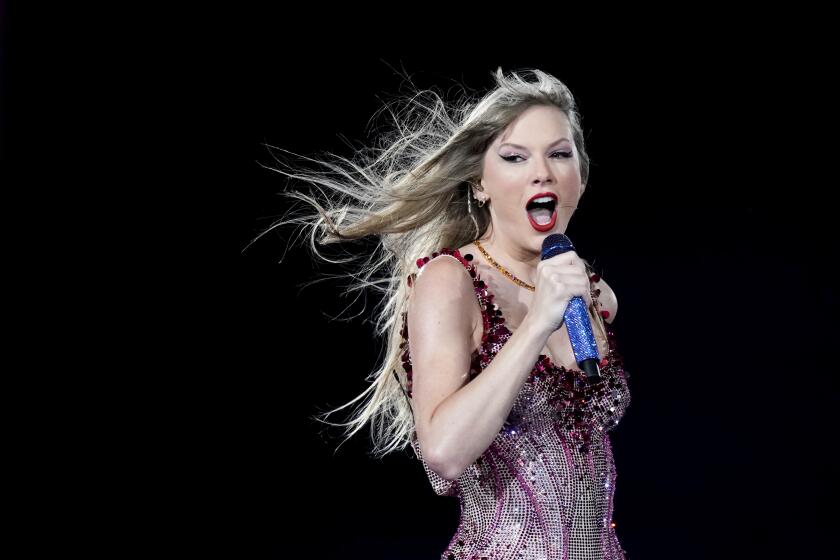Rate of Inflation Slows but New Surge Is Likely : Economists Warn That Drought Could Increase Anticipated Rise in Food Prices in June and July
WASHINGTON — The pace of inflation slowed a bit last month, despite sharp rises in the cost of gasoline and medical care, the Labor Department reported Tuesday, but economists warned that May’s modest price increases will seem to be “a fond memory” when the impact of the Farm Belt drought reaches grocery stores.
The consumer price index increased at a seasonally adjusted 0.3% rate last month, down from 0.4% in April and 0.5% in March. It was the smallest monthly advance since a 0.2% rate in February.
Sees Pace Accelerating
“I think we should put May as a fond memory,” said Stacy Kogtman of the Georgia State University Economic Forecasting Project. “We look for inflation to accelerate in June and July. We were looking for food prices to increase anyway, and the drought will accelerate that.”
Robert Dederick, executive vice president of Northern Trust Co. in Chicago, said that inflation seems to have “broken off the plateau that it was on for so long.”
Even without the drought, Dederick said, retail prices can be expected to reach the 5% rate by the end of this year, a substantial increase from last year’s 4.4%. If the drought persists, he added, the rate could climb to 6%.
Alison Lynn Reaser, senior economist of First Interstate Bancorp, Los Angeles, said that it is still too early to determine the impact of the drought on inflation but “certainly there is a potential for faster increase in food prices that would just add to other forces pushing up the rate of inflation.”
“Consumers are likely to see increases in prices of a number of goods and services as we move through the summer and fall,” she added. “The May rate is probably lower than what we are likely to see over the next year.”
Gasoline prices rose 1.7% last month following a 1.1% increase in April, ending almost a year of stable fuel prices. Even with the sharp two-month advance, gasoline prices were only 2.9% higher than they were a year ago.
Medical Costs Rise
Medical costs increased 0.7% in May and are now 6.4% higher than they were in May, 1987. Food and beverage prices increased 0.4% in May following a 0.6% rise in April.
Offsetting the increases, the cost of clothing leveled off last month, apparently as a result of consumer resistance to sharp price increases earlier in the year. Women’s apparel prices declined 0.4% last month following an increase of more than 7% in March and April.
Economists said that the May report looked good in comparison to March and April because of the massive swing in clothing prices.
Kogtman of Georgia State said: “We knew that retailers would be unable to continue to pass on those (women’s apparel) costs (as they did in March and April). Sure enough, we saw some discounting and sales. We can continue to look for good performance in apparel.”
$17.50 Above Base Period
The May figures pushed the consumer price index to 117.5. That means a selection of goods that cost $100 in the 1982-84 base period now cost $117.50, 10 cents more than in April.
In a related report Tuesday, the Labor Department said that average weekly earnings, adjusted for inflation, fell 0.3% last month. The rate had increased 1% in April after declining 0.6% in March. The inflation-adjusted wages of the average American were 0.7% below what they had been a year ago.
Despite predictions by economists of worse inflation ahead, the moderate May report is expected to calm some of the inflation jitters that have been upsetting stock and currency markets.
Nevertheless, Reaser of First Interstate said that the Federal Reserve should--but probably won’t--act to restrain the economy in the coming months.
Predicts Caution by Fed
“The likelihood is that the Fed will err on the side of being too easy,” she said. “I think there is a reluctance to push up interest rates rapidly enough to curtail the growth of the money supply.”
Dederick of Northern Trust said: “The Fed is really going to have to feel its way.”
He said that the Federal Reserve’s recent modest tightening of the money supply “seems to have been called for.” But he added: “To move again right now would be on the bold side. Given what they have done to date, I’d say, let’s wait until we get another month’s data.”
More to Read
Get the L.A. Times Politics newsletter
Deeply reported insights into legislation, politics and policy from Sacramento, Washington and beyond. In your inbox three times per week.
You may occasionally receive promotional content from the Los Angeles Times.










